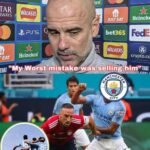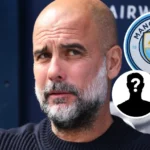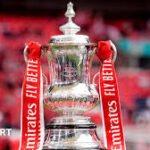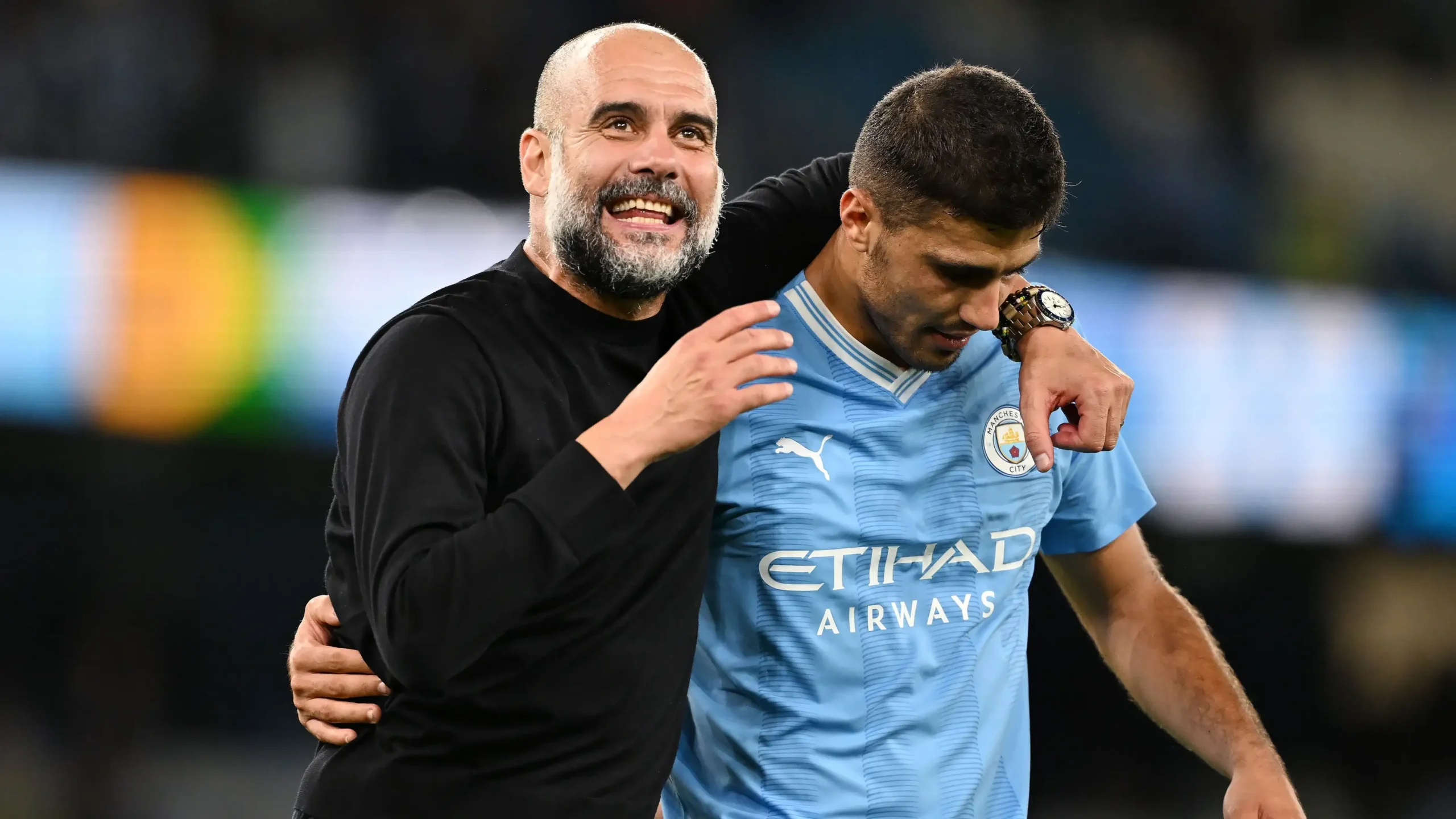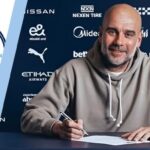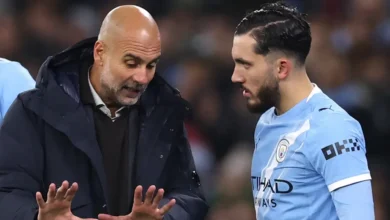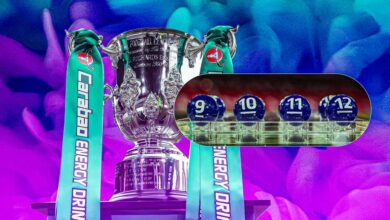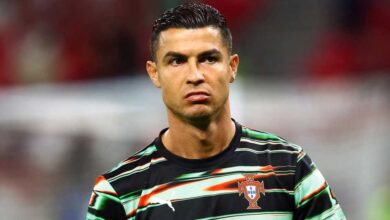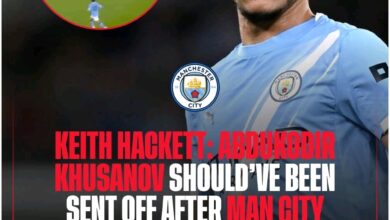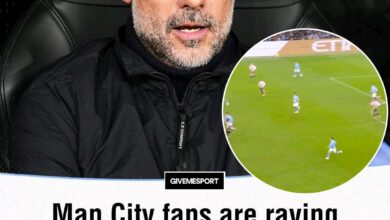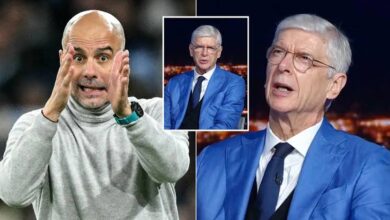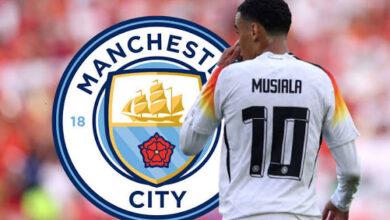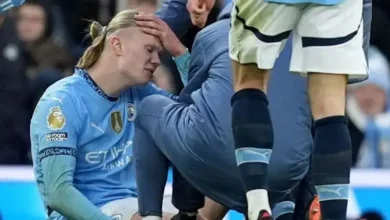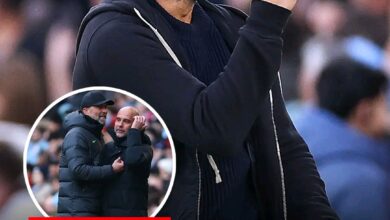Rodri returning date finally confirmed Will he play against Nottingham forrest??

In a significant boost to Manchester City’s aspirations for the remainder of the season, Spanish midfield maestro Rodri has made his long-awaited return to full training with the Premier League champions. The pivotal midfielder, whose absence has been keenly felt throughout the campaign, has been sidelined since suffering a devastating anterior cruciate ligament (ACL) injury in September, but now appears to be on the final stretch of his recovery journey.
The Return Timeline
Sources close to Manchester City have confirmed that while Rodri was pictured participating in the club’s open training session on Wednesday, this was not actually his first session back with the squad. The 28-year-old has been gradually reintegrating into team activities over recent weeks as part of a carefully managed rehabilitation program designed by City’s medical staff.
While the sight of Rodri back on the training pitch will undoubtedly excite City supporters, expectations must be tempered with caution. Sky Sports News understands that the club’s medical team has deliberately avoided setting a concrete timeframe for his competitive return. The current assessment suggests that Rodri is targeting the FIFA Club World Cup in June as his most realistic opportunity to make a playing comeback, rather than the more immediate fixtures in City’s calendar, including the FA Cup Final against Crystal Palace on May 17th or any of their remaining Premier League encounters.
This measured approach reflects the serious nature of ACL injuries, which typically require between six to nine months of recovery time before a player can safely return to competitive action. For Rodri, who sustained the injury in September, a June return would align with the standard recovery protocol for this type of severe knee injury.
Impact of Rodri’s Absence
It would be difficult to overstate the importance of Rodri to Manchester City’s system under Pep Guardiola. Since joining from Atletico Madrid in 2019, the Spanish international has established himself as one of the world’s premier defensive midfielders, combining exceptional positional awareness with remarkable technical ability and tactical intelligence.
Prior to his injury, Rodri had been enjoying arguably the finest form of his career. His absence created a void in City’s midfield that proved challenging to fill, despite the squad’s considerable depth. The team’s performance metrics demonstrate a clear statistical drop-off without their midfield anchor, with both defensive solidity and build-up play affected by his absence.
Throughout the season, Guardiola has been forced to experiment with various alternatives, including deploying John Stones in an advanced role and relying more heavily on Mateo Kovačić and Rico Lewis. While these solutions have been serviceable, none has fully replicated Rodri’s unique combination of defensive security and progressive passing.
City’s results during Rodri’s absence tell their own story. While maintaining their place in title contention, there have been several uncharacteristic defensive lapses and periods of midfield instability that would likely have been mitigated by the Spaniard’s presence. His ability to control tempo, sense danger, and provide a reliable passing option under pressure has been sorely missed during crucial moments of the campaign.
The Path to Recovery
Rodri’s rehabilitation journey offers insight into the meticulous approach taken by elite clubs when managing serious injuries to key players. The process began with an initial period of rest and controlled movement following surgery, gradually progressing to individual strength and conditioning work away from the main squad.
As his knee stability improved, rehabilitation intensified to include more dynamic movements and ball work. The final phases involve careful reintegration into team training sessions, initially participating in non-contact drills before graduating to full involvement.
Throughout this process, City’s medical team has worked closely with specialist consultants to ensure every precaution is taken. The club’s investment in state-of-the-art medical facilities at the City Football Academy has played a crucial role in facilitating his recovery, providing access to cutting-edge equipment and rehabilitation technologies.
Dr. Ramon Cugat, the renowned Barcelona-based knee specialist who has previously treated City players including Kevin De Bruyne and Aymeric Laporte, is believed to have been consulted throughout Rodri’s recovery journey. This collaborative approach between the club’s in-house medical team and external specialists exemplifies the meticulous care given to player welfare at the highest level.
The Club World Cup Target
The expanded FIFA Club World Cup, scheduled to begin on June 18th, represents an enticing target for Rodri’s comeback. Manchester City will face Moroccan side Wydad Athletic Club in their opening fixture, followed by matches against UAE’s Al Ain and Italian giants Juventus in the group stage.
This tournament holds significant appeal as a return platform for several reasons. First, the mid-June start date provides Rodri with additional recovery time compared to the domestic season’s conclusion in May. Second, the competition’s prestige offers meaningful stakes that would motivate any player returning from injury. Finally, the different intensity level compared to Premier League action might provide a more controlled environment for reintroduction to competitive football.
Manchester City’s participation in the Club World Cup reflects their ongoing status as one of football’s dominant forces. Having finally secured the UEFA Champions League trophy in 2023, City qualified for this expanded tournament as European champions, giving them the opportunity to add yet another trophy to their burgeoning cabinet under Guardiola’s stewardship.
For Rodri personally, the Club World Cup would offer a chance to add another prestigious honor to his impressive collection, which already includes multiple Premier League titles, the Champions League, UEFA Nations League, and European Championship with Spain.
Guardiola’s Squad Management
Pep Guardiola’s man-management skills will once again be tested as he navigates the delicate balance between rushing Rodri back and being overly cautious. The Catalan coach has consistently prioritized player welfare throughout his managerial career, often taking a conservative approach with injury recoveries despite the pressures of competition.
Thursday’s press conference will likely see Guardiola provide his characteristic blend of medical update and philosophical perspective on Rodri’s situation. Guardiola has previously spoken about the psychological aspects of returning from serious injury, emphasizing the importance of mental confidence alongside physical recovery.
The manager’s decision-making around Rodri’s reintegration will be influenced by several factors, including the player’s own feedback, medical advice, and the competitive context of matches. Given City’s continued involvement in multiple competitions, Guardiola has the luxury of potentially easing Rodri back through carefully selected appearances rather than immediately thrusting him into high-pressure situations.
Haaland’s Return and Other Injury Updates
Rodri’s progress comes alongside positive news regarding Erling Haaland, with the Norwegian striker also returning to training following an ankle injury. Haaland’s scoring prowess has been a cornerstone of City’s attacking threat, and his availability for the season’s conclusion would significantly enhance their prospects across all competitions.
However, there remain concerns in defense, with both Nathan Ake and John Stones currently unavailable for training. This defensive fragility has been a recurring theme throughout the season, occasionally undermining City’s otherwise imperious form. Guardiola will undoubtedly be asked about their recovery timelines during Thursday’s press conference.
The contrasting injury situations highlight the physical demands placed on elite players in the modern game, particularly those competing across multiple competitions at the highest level. The congested fixture schedule, intensified by international commitments, creates significant physical strain that inevitably results in injury occurrences even with the most sophisticated prevention protocols.
Remaining Fixtures and Season Aspirations
Manchester City’s remaining fixture list presents both opportunities and challenges as they pursue success on multiple fronts:
Premier League Campaign:
- May 2: Wolves (Home)
- May 10: Southampton (Away)
- May 25: Fulham (Away)
- TBD: Bournemouth (Home)
FA Cup Final:
- May 17: Crystal Palace (Wembley)
FIFA Club World Cup:
- June 18: Wydad AC (Group Stage)
- June 23: Al Ain (Group Stage)
- June 26: Juventus (Group Stage)
- Potential knockout matches depending on group performance
The Premier League title race has once again gone to the wire, with City battling familiar rivals for the crown. Their remaining league fixtures, while not against traditional “Big Six” opponents, each present unique challenges that must be navigated carefully.
The FA Cup Final against Crystal Palace offers the most immediate opportunity for silverware. Palace’s counterattacking style under their management has often troubled City in recent seasons, making this Wembley showdown potentially trickier than the teams’ respective league positions might suggest.
The Club World Cup, meanwhile, represents relatively uncharted territory in its expanded format. The tournament’s positioning after the conclusion of the domestic season creates interesting dynamics regarding player freshness and motivation. City’s group contains varied opposition in Wydad AC, Al Ain, and Juventus – representing African, Asian, and European football respectively.
Historical Context: ACL Recoveries and Performance Impact
ACL injuries represent one of football’s most feared diagnoses due to both their lengthy recovery periods and potential long-term impact on performance. Historical data on ACL recoveries provides interesting context for Rodri’s situation.
Modern medical advances have significantly improved outcomes for players returning from ACL reconstructions. Where once such injuries might have been career-threatening, contemporary surgical techniques and rehabilitation protocols have enabled many players to return to their previous performance levels.
Notable examples of successful ACL recoveries include Virgil van Dijk, who returned to elite level following his 2020 injury, and Aymeric Laporte, Rodri’s City teammate who successfully recovered from a similar setback. These cases offer encouraging precedents, although every injury has unique characteristics that can affect recovery trajectories.
Research indicates that the first six months after returning to competition represent the highest risk period for re-injury, highlighting the importance of City’s cautious approach to Rodri’s reintegration. This period requires careful load management and ongoing monitoring to ensure full recovery continues.
Statistical analysis of players returning from ACL injuries suggests that while physical capabilities often return to pre-injury levels, subtle aspects of performance – such as high-intensity actions and explosive movements – may take longer to fully recover. For a player like Rodri, whose game relies more on positioning and technical ability than raw athleticism, this may be less problematic than for more explosive athletes.
Tactical Implications of Rodri’s Return
When Rodri does eventually make his competitive return, his reintegration will have significant tactical implications for Manchester City’s setup. Guardiola’s system has evolved during the Spaniard’s absence, with various players adapting to fulfill aspects of his role.
The most immediate impact will likely be increased control in midfield transitions. Rodri’s exceptional reading of the game allows him to position himself perfectly to intercept opposition counterattacks – a quality that no replacement has fully replicated. This defensive security enables City’s full-backs and attacking midfielders to maintain higher positions without exposing the backline.
His return would also restore City’s build-up patterns to their optimal functioning. Rodri’s comfort receiving the ball under pressure and ability to progress possession through intelligent passing are fundamental to Guardiola’s possession-based approach. His spatial awareness creates passing angles that facilitate the team’s circulation of the ball, particularly when opponents employ low defensive blocks.
Furthermore, Rodri’s aerial presence adds another dimension to City’s set-piece threat at both ends of the pitch. His height and timing make him valuable for defending opposition corners and threatening from attacking set-pieces – an increasingly important aspect of modern football where marginal advantages often decide tightly contested matches.
The Broader Significance for Manchester City
Beyond the immediate tactical implications, Rodri’s return carries broader significance for Manchester City as an organization. It represents another example of the club’s world-class medical infrastructure successfully rehabilitating a key player from a severe injury – an increasingly important capability in the context of congested modern football calendars.
His recovery also highlights the depth of Guardiola’s squad, which has remained competitive across multiple fronts despite missing such an influential player. This resilience speaks to both the quality of the playing staff and the adaptability of Guardiola’s tactical approach.
Looking toward the future, Rodri’s successful rehabilitation reinforces his potential longevity at the highest level. At 28 years old, the Spanish international remains in his prime years as a midfielder, with his playing style suggesting he could maintain elite performance well into his thirties, following the path of other technically gifted, positionally intelligent midfielders.
Conclusion
Rodri’s return to Manchester City training represents a significant milestone in his recovery journey and provides a timely boost as the club pursues honors across multiple competitions. While expectations should be managed regarding his immediate availability, his presence on the training pitch alone will lift spirits throughout the squad.
The club’s patient approach to his rehabilitation demonstrates both their long-term perspective and the value they place on his contributions. By targeting the Club World Cup rather than rushing him back for domestic fixtures, City are prioritizing Rodri’s complete recovery over short-term considerations.
For football fans, Rodri’s impending return promises the reinstatement of one of the modern game’s most accomplished midfield orchestrators. His combination of defensive awareness, technical excellence, and tactical intelligence makes him a uniquely complete midfielder whose influence extends far beyond statistical contributions.
As Manchester City enter another crucial period that could define their season, the gradual reintegration of their midfield linchpin may prove to be as significant as any new signing. The sight of Rodri back in sky blue, dictating play from the base of midfield, will be welcomed not just by City supporters but by purists who appreciate the subtle artistry of one of football’s finest practitioners of the defensive midfield craft.
This expanded coverage will continue to be updated as more information becomes available regarding Rodri’s return to competitive action.
